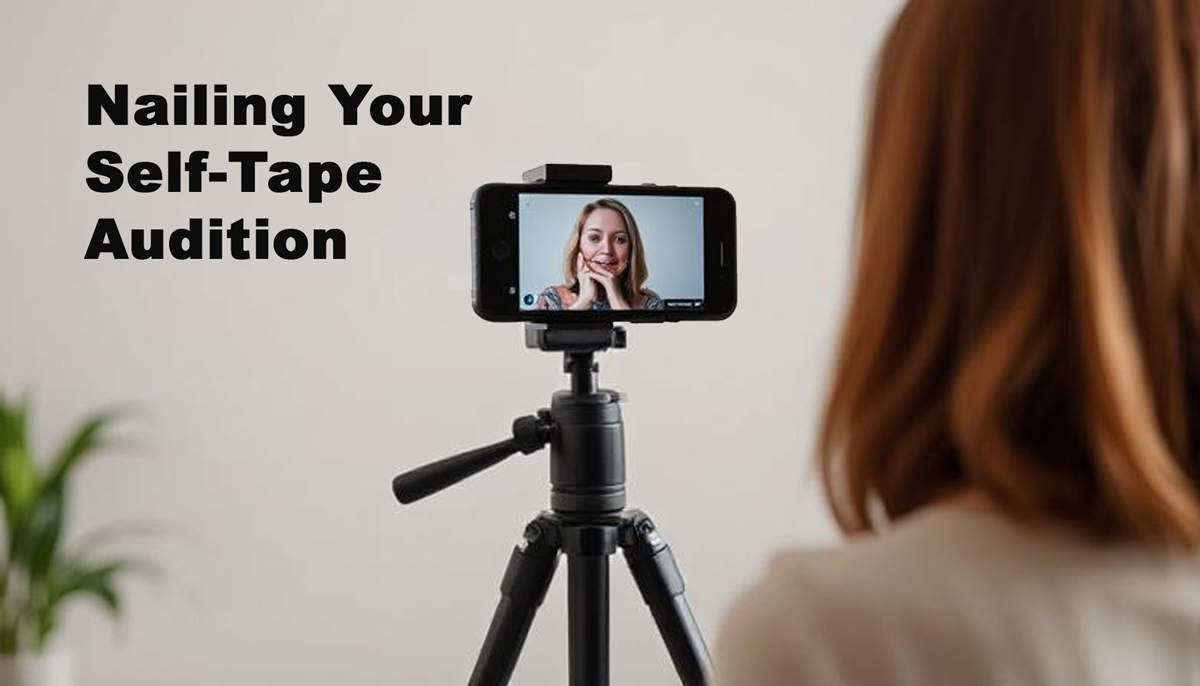Self-tape auditions have become a staple in the casting process, allowing actors to audition from anywhere in the world. However, with this convenience comes increased competition. To make sure your self-tape stands out, follow these essential tips.
1. Follow the Instructions Carefully
Casting directors provide specific guidelines for a reason. Always double-check details such as framing, file format, and submission deadlines. Ignoring instructions could mean an automatic rejection, no matter how great your performance is.
2. Get the Right Setup
Investing in the right equipment can significantly improve the quality of your self-tape:
- Lighting: Use soft, natural lighting or a ring light to ensure your face is well-lit and visible.
- Camera: A smartphone with a good camera can work, but a DSLR or mirrorless camera will provide better clarity.
- Tripod: Keep your camera steady to maintain a professional look.
- Backdrop: A neutral background (blue or gray) helps keep the focus on you.
3. Perfect Your Framing and Eye Line
Typically, a medium close-up (head and shoulders) is best unless stated otherwise. Your eye line should be slightly off-camera, directed toward an imagined scene partner or reader.
4. Ensure Clear Audio
Good sound is just as important as good visuals. Record in a quiet space and use an external microphone if possible. Avoid echoes and background noise that could distract from your performance.
5. Dress the Part
Wear clothing that suggests the character without going overboard. Avoid overly busy patterns or logos that might be distracting on camera.
6. Deliver an Engaging Performance
- Know Your Lines: Be well-prepared so you can focus on acting and grabbing the viewer’s attention in the first ten seconds, rather than remembering words.
- Stay Natural: Self-tapes allow for subtle, nuanced performances. Bring your uniqueness and avoid overacting.
- Use Props Sparingly: Keep the focus on you, not unnecessary distractions.
7. Have a Strong Reader
If your scene involves dialogue, having a solid off-camera reader is crucial. They should deliver lines in a natural, controlled manner without overshadowing your performance.
8. Edit and Submit Professionally
Trim the video to remove long pauses at the start and end. Ensure good video and sound quality. Label your file correctly, for example, “YourName_Role_Project.mp4” before submitting.
9. Check and Double-Check
Before sending, watch your tape to ensure there are no technical issues. Also, make sure you have uploaded the correct version.
10. Follow Up (If Appropriate)
If the casting call allows for follow-ups, a polite email to confirm receipt can sometimes help. However, avoid excessive messaging as it may come off as pushy.
Final Thoughts
A great self-tape is more than just a good performance. It is about presenting yourself in the best possible light, both technically and artistically. With practice and attention to detail, you can make sure your self-tape leaves a lasting impression on casting directors.
What are your top self-tape tips? Share your experiences in the comments!
#ActingTips #SelfTape #CastingCall #ActorLife #AuditionAdvice #FilmandTV #EntertainmentIndustry #ActingCareer #AuditionTips
User Posts
All scripts, poems, short stories and posts on this site are copyrighted. They may not be printed, quoted or performed without permission.
You are granted a non-exclusive, limited, non-transferable, revocable license to use this site in accordance with these terms.

Leave a Reply